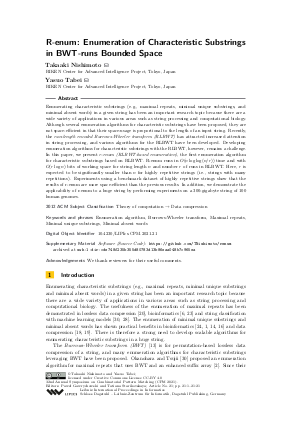LIPIcs.CPM.2021.21.pdf
- Filesize: 0.98 MB
- 21 pages

 Creative Commons Attribution 4.0 International license
Creative Commons Attribution 4.0 International license


































Feedback for Dagstuhl Publishing